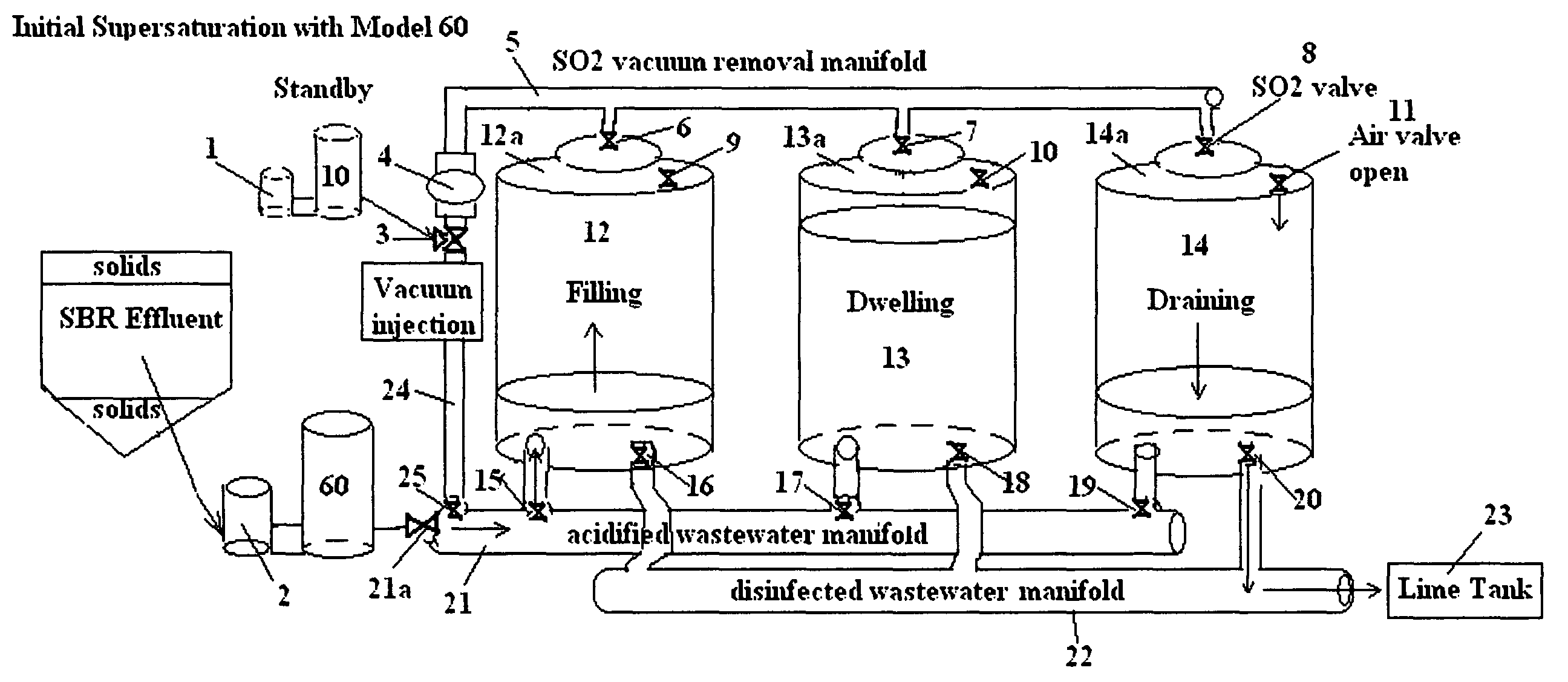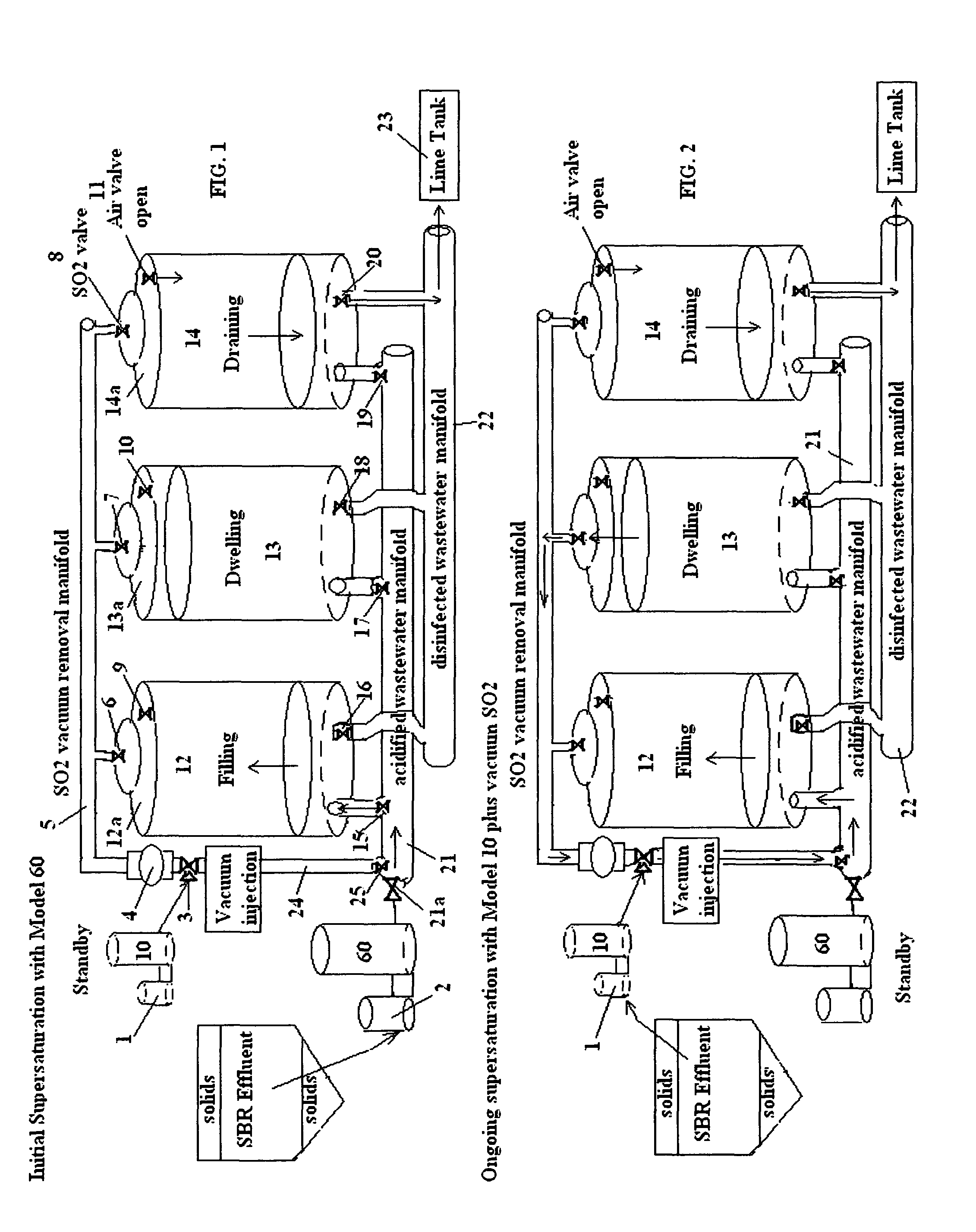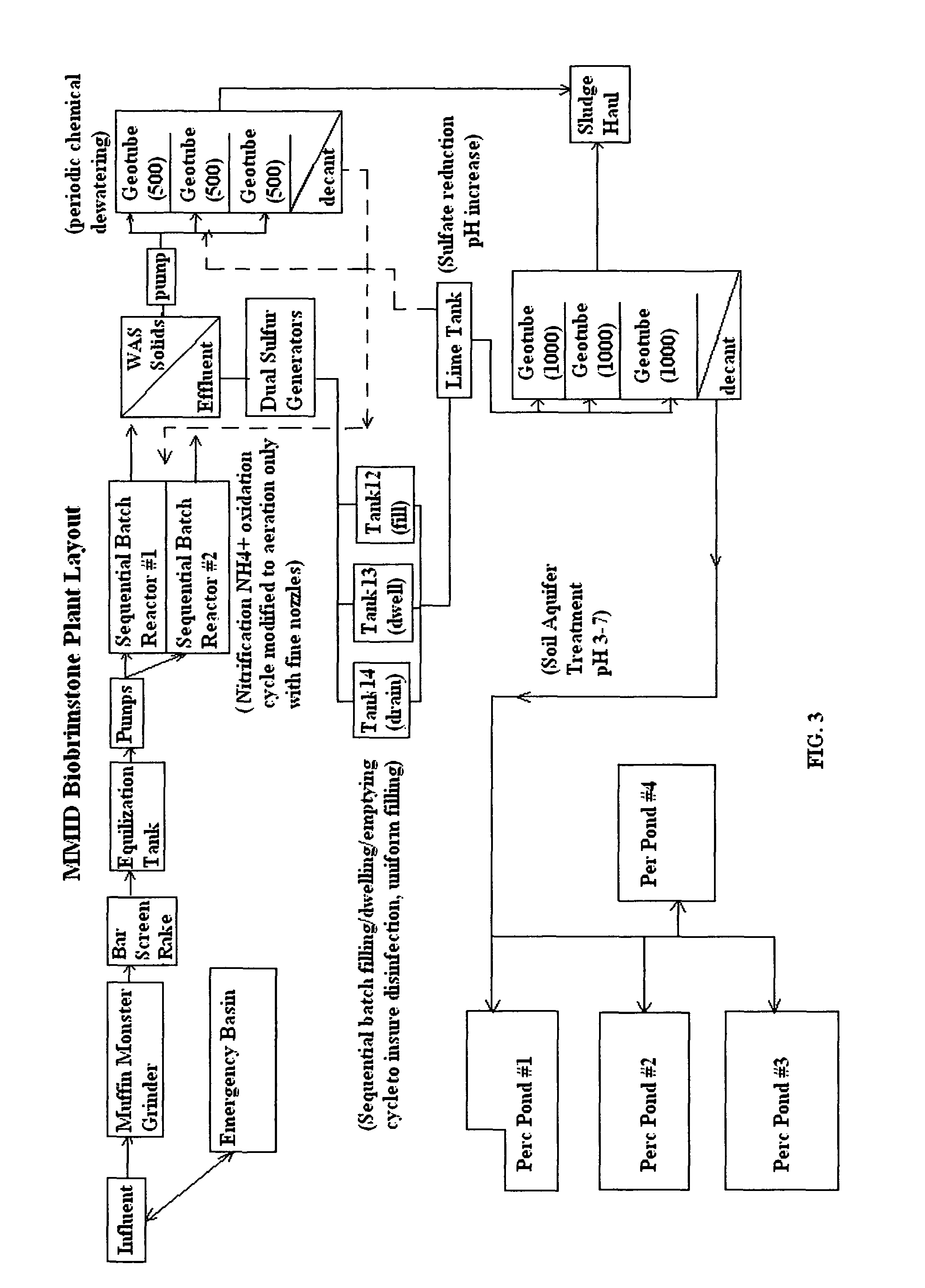Method to reduce wastewater treatment plant footprints and costs
a wastewater treatment plant and footprint technology, applied in water/sewage multi-stage treatment, biological water/sewage treatment, water/sewage treatment by oxidation, etc., can solve the problems of unsuitable material for any beneficial use, difficult to reduce the content of treated wastewater brine, and unsuitable for industrial discharge sludge or biosolids, etc., to reduce sulfur dioxide and reduce the amount of treatment plant footprint
- Summary
- Abstract
- Description
- Claims
- Application Information
AI Technical Summary
Benefits of technology
Problems solved by technology
Method used
Image
Examples
Embodiment Construction
[0081]FIG. 1 illustrates a typical dual sulfur generator layout of a rapid chemical dewatering method in an initial super saturation mode. Two sulfurous acid generators 1, 2 are associated as part of a circuit to alternatively treat effluent from a sequential batch reactor (SBR). The larger is a Model 60 Harmon Systems International sulfurous acid generator 2 capable of treating ½ MGD burning 75 pounds sulfur / hour, which first is used to supersaturate the SBR effluent, which enters an acidified wastewater manifold 21 controlled by a valve 21a, which then sequentially fills three enclosed 20,000 gallon treatment tanks, 12, 13, 14. The three tanks 12, 13, 14 are sequentially filled within a short distance from their enclosed tops 12a, 13a, 14a, leaving an air space wherein excess sulfur dioxide gas accumulates and is concentrated. These tank tops 12a, 13a, 14a have air valves 9, 10, and 11 and SO2 removal valves 6, 7, 8. The air valves 9, 10, 11 are in communication with the atmospher...
PUM
| Property | Measurement | Unit |
|---|---|---|
| pH | aaaaa | aaaaa |
| pressure | aaaaa | aaaaa |
| mean retention time | aaaaa | aaaaa |
Abstract
Description
Claims
Application Information
 Login to View More
Login to View More - R&D
- Intellectual Property
- Life Sciences
- Materials
- Tech Scout
- Unparalleled Data Quality
- Higher Quality Content
- 60% Fewer Hallucinations
Browse by: Latest US Patents, China's latest patents, Technical Efficacy Thesaurus, Application Domain, Technology Topic, Popular Technical Reports.
© 2025 PatSnap. All rights reserved.Legal|Privacy policy|Modern Slavery Act Transparency Statement|Sitemap|About US| Contact US: help@patsnap.com



